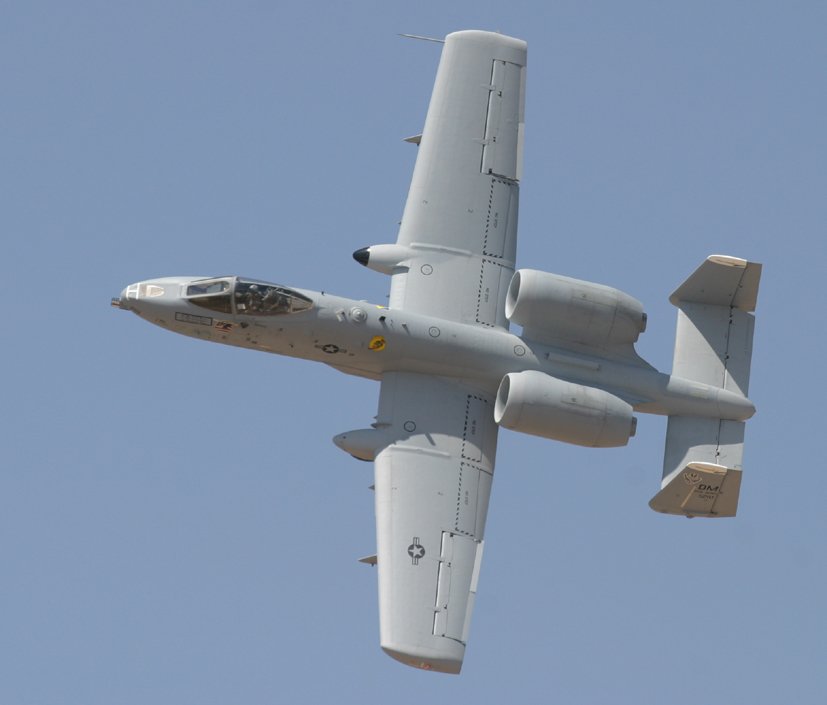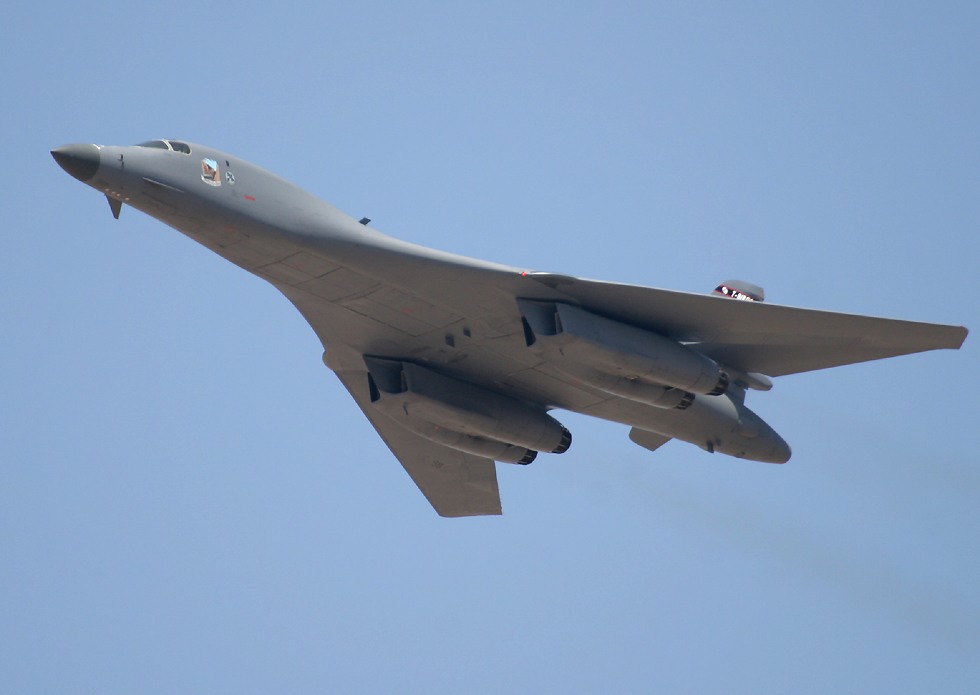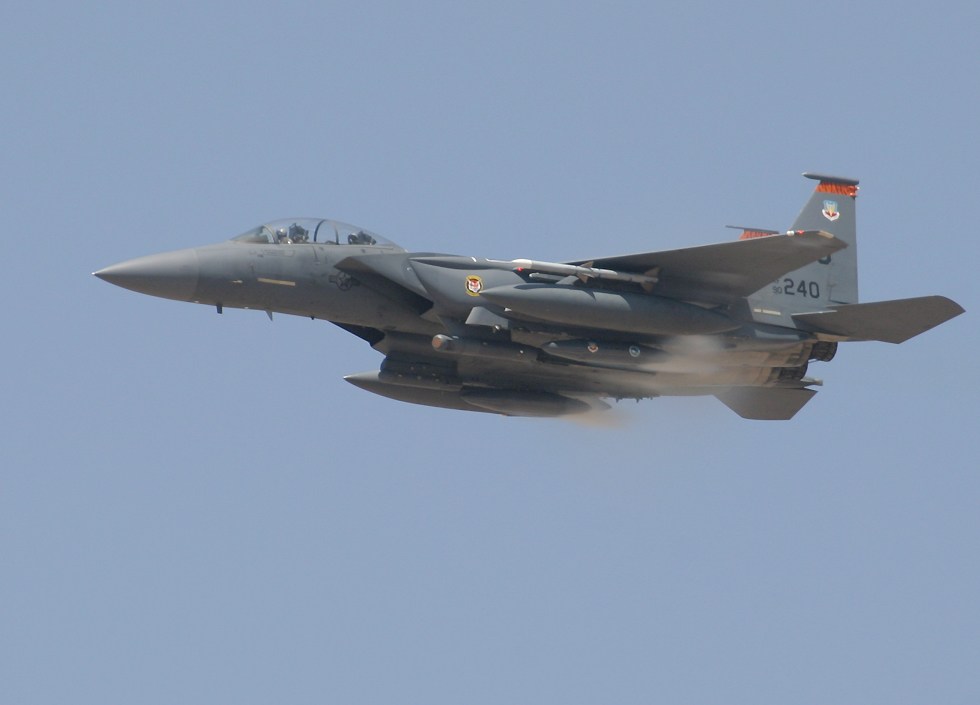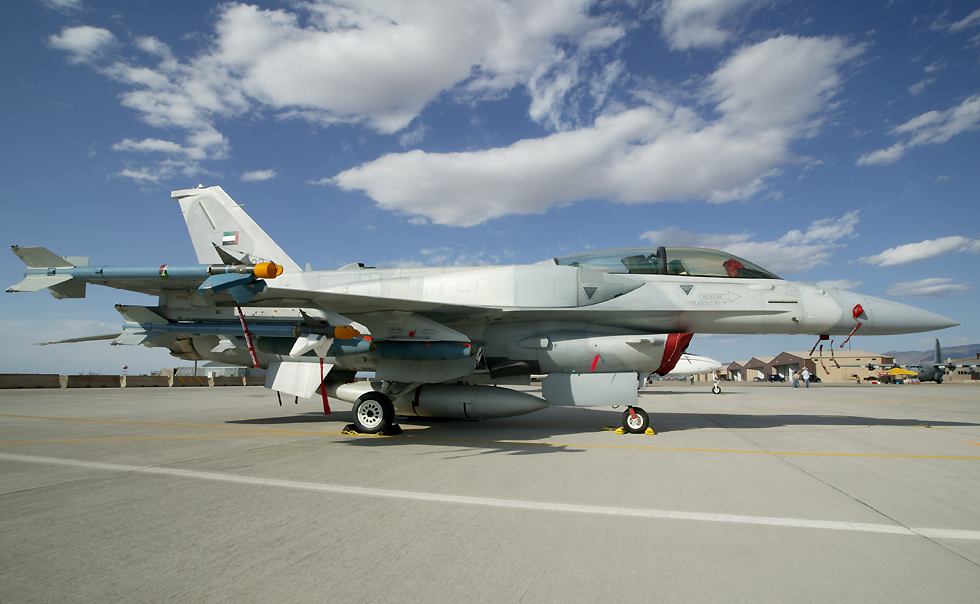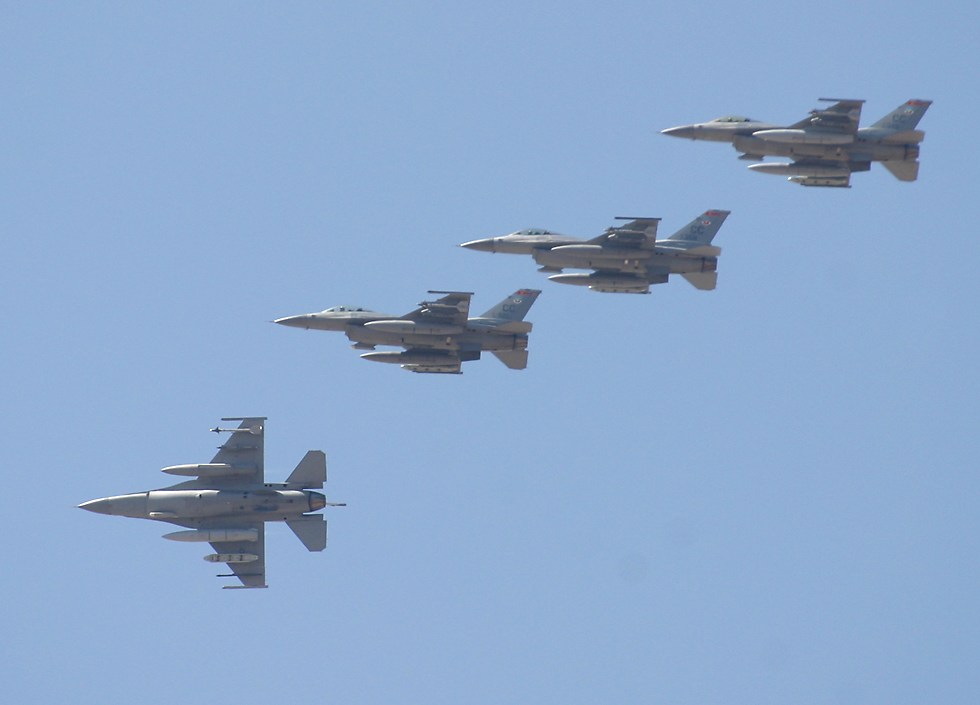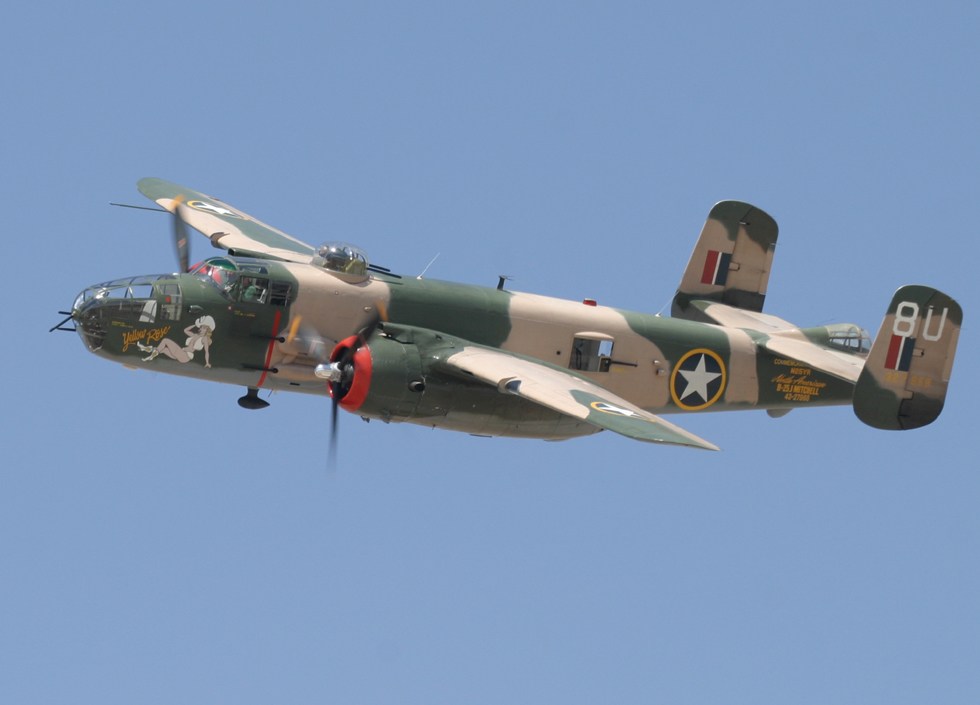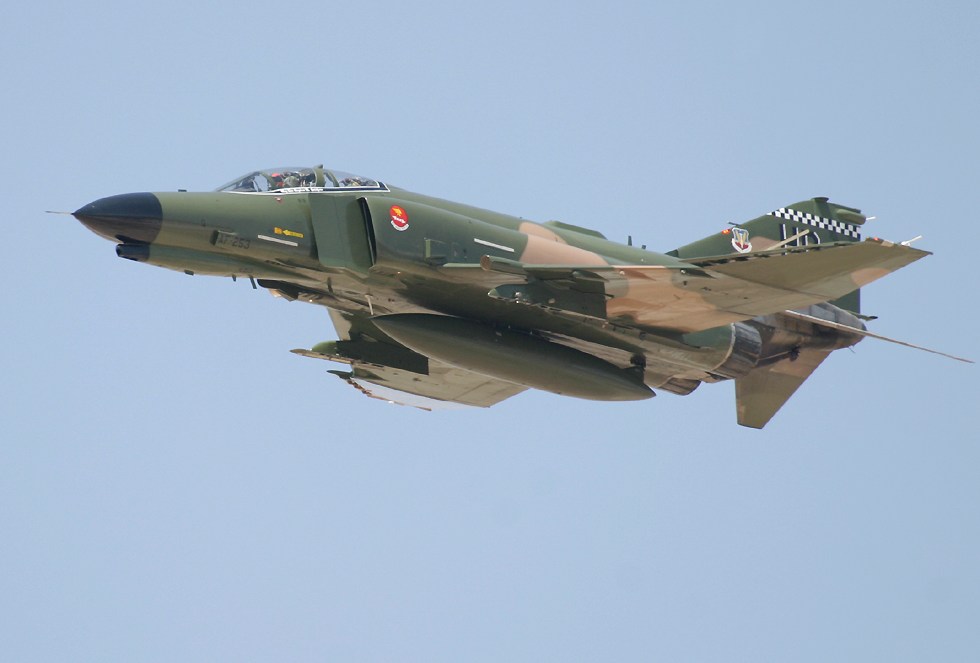Highlights of the 2005 Holloman Airshow
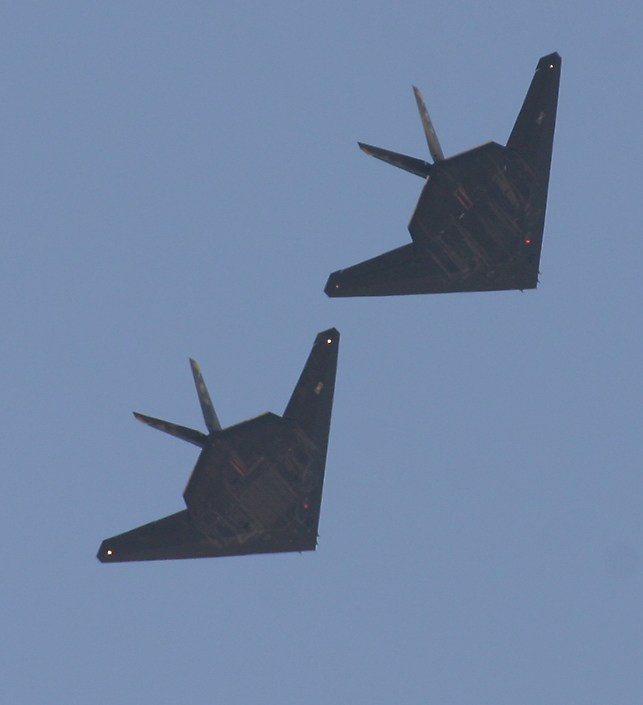
The F-117 "stealth fighter" display was a major highlight for many of the crowd. In fact there were two displays, one by four Nighthawks which did part of their act as two groups of two aircraft, including a head-on pass with two Nighthawks flying in one direction and the other two flying in the opposite direction. |
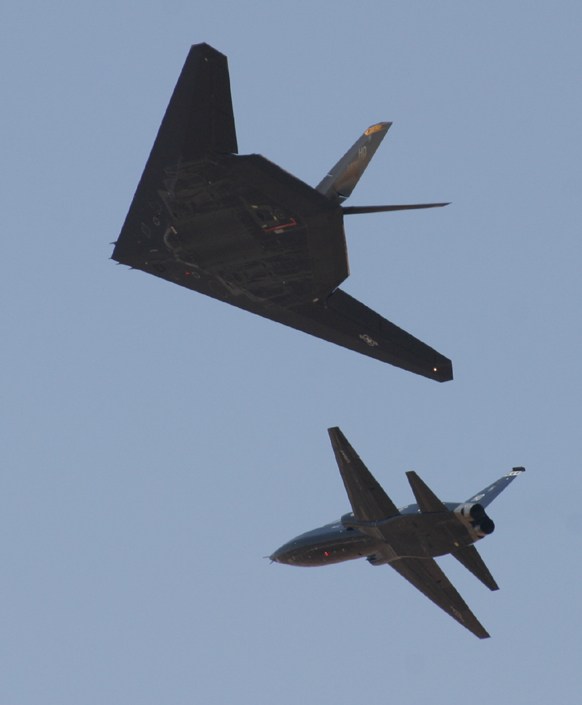
There was also a simulated training flight with an F-117 together with a T-38 Talon flying as a chase plane. Since there are no two-seat F-117s, training is done with an instructor in the T-38 following the trainee in the stealth fighter. Only experienced pilots are transitioned over to the Nighthawks, the two I spoke to at this show as well as the one I spoke to at the 2005 Nellis airshow had all previously flown F-15C Eagles. I have no real idea why the air force thinks it's a good thing to move air-to-air fighter pilots to a dedicated ground attack aircraft, but it's certainly a great act to see. It certainly demonstrates that the F-117 is a larger aircraft than most people imagine, it's actually about the same size as an F-15. |
|
Apparently this is the only time this display has ever been done, it's certainly nice to see the Nighthawk do something other than a flat pass, and it's just as nice to see the attractive T-38 trainer in action. There was also a rarely seen four-ship formation of T-38s during the show. |
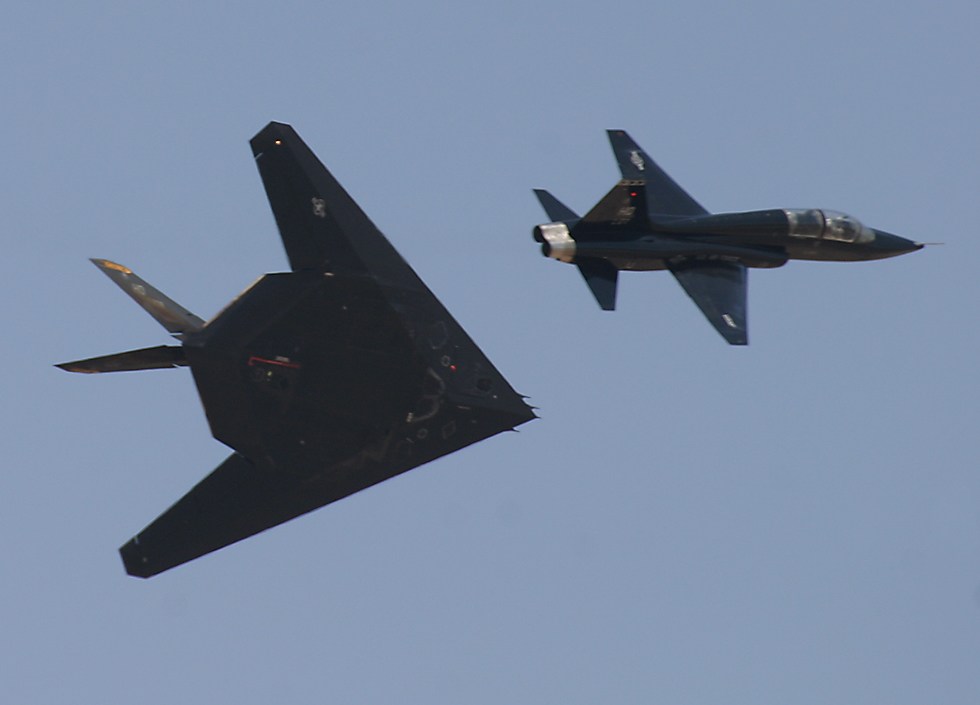 |
|
Another real highlight particularly for American enthusiasts was the display by German air force Tornado fighter bombers. These sometimes appear on static display at places like the Yuma airshow in Arizona and I was even able to sit in the cockpit of one at the Vandenburg airshow in California, but it's extremely rare to see any type of foreign aircraft flying in the United States, perhaps due to concerns about safety and the bad publicity which would come from an accident. However here they were allowed to do their thing, and although I've seen plenty of German and British Tornadoes flying at the 2002 Royal International Air Tattoo in the UK, this was the only time I've seen a formation of them, and it even included a simulated "buddy refueling" of one Tornado by another. In fact this was only the second "buddy refueling" demonstration I'd ever seen, the previous one being by Royal New Zealand Air Force A-4 Skyhawks, unfortunately before I had the equipment or skill to get decent photographs. |
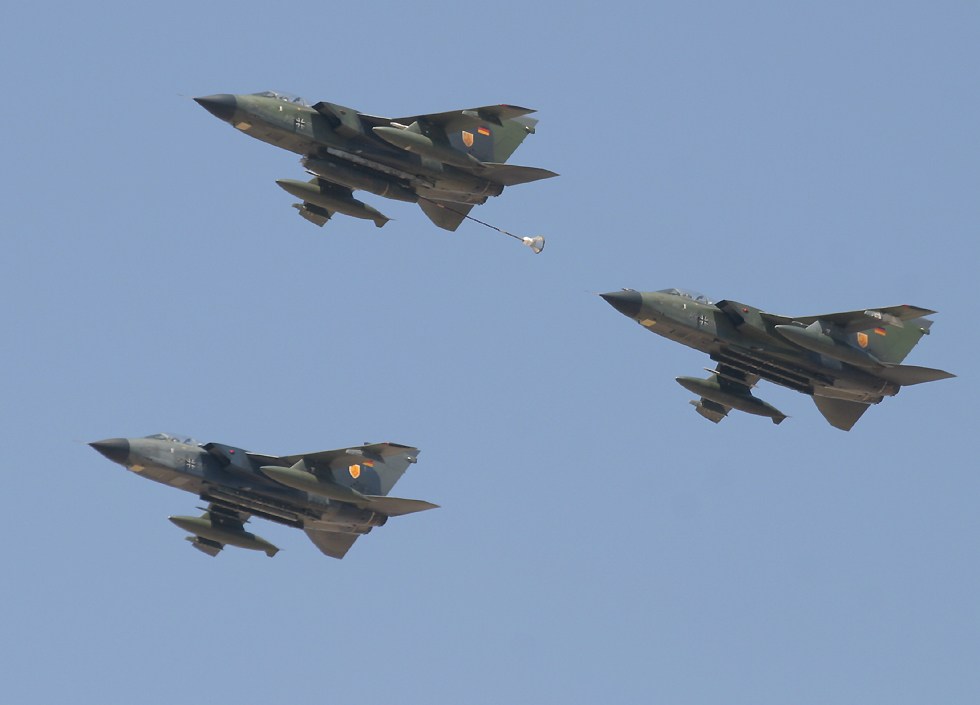 |
|
B-25s are relatively common in the United States, but this CAF world war two P-39 Airacobra fighter certainly isn't. This is the only example of this type that I've ever seen, and I've only ever seen it fly once before, again at the 2003 Yankee Air Museum airshow near Detroit. It wasn't one of the war's great fighters, but the cannon mounted through the propeller hub made it an effective ground attack weapon, and it was widely used in this role by the Russians who took about half of all of these aircraft which were manufactured. It's a very interesting aircraft, not only because of the unusual cannon arrangement, but also because the engine is mounted behind the pilot. It was also the only tricycle undercarriage land-based fighter used by the Allies, and had an unusual car-style door rather than the usual sliding or hinged canopy. I had an opportunity to speak to its pilot on the day before the show, he was certainly no spring chicken, but very enthusiastic and he explained a few features of the aircraft, such as the mechanism which allowed the pilot to bail out by jettisoning the door, which normally opened forward, obviously a problem if you're trying to get out in a 200 mile per hour slipstream! |
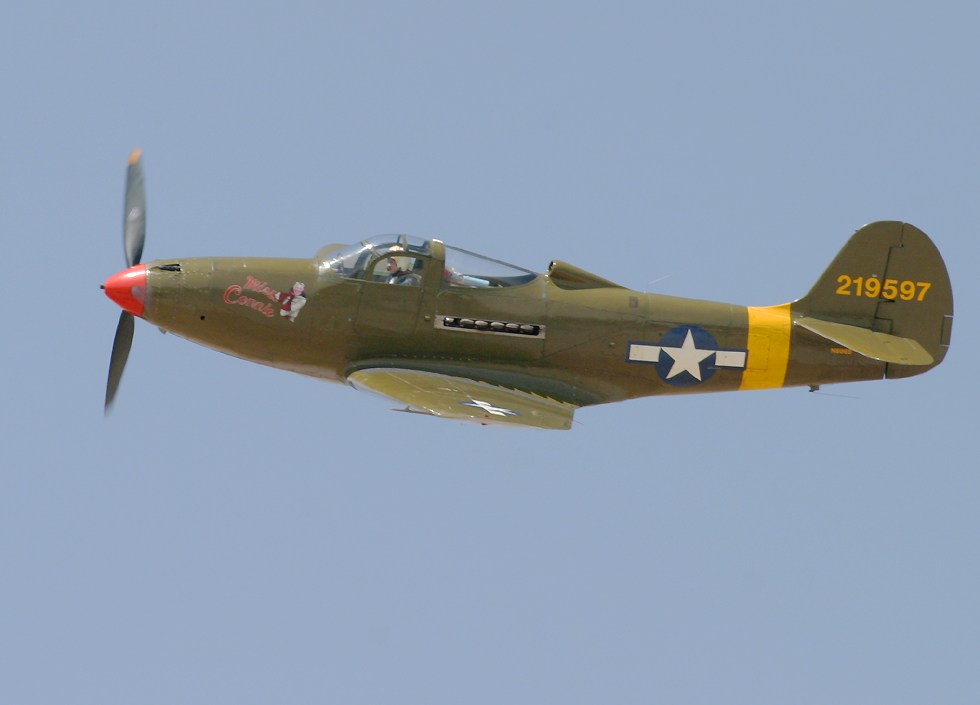
|
|
An immaculate Russian designed MiG 17 "Fresco" fighter jet gave a taste of what front line military aircraft looked like during the early and middle years of the Cold War. This is only the second MiG 17 in military colors that I've ever seen, the other one being at the Yankee Air Museum airshow in 2003. Both of them used their afterburners, which unlike modern day afterburners put out a rather odd looking thin stream of flame which seemed to spit out the back of the engine. As well as these two aircraft I have seen frequent displays by a MiG 17 sponsored by Red Bull whose pilot certainly puts on an excellent show; however the inauthentic colors and advertising on this aircraft spoil the effect for purists like me, though for most members of the public I doubt whether it matters. |
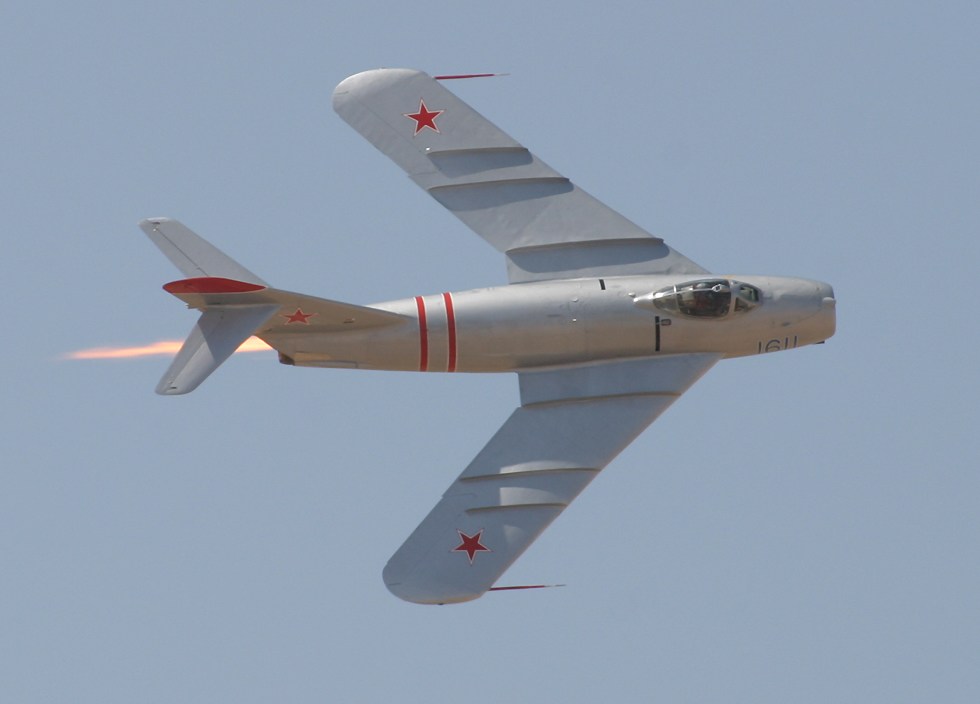
|
|
The Phantom was the main motivation for me to make the long haul from California through El Paso in Texas to this one day show. The historic color scheme, and the chance to see the F-4 flying on its own, taxying and in a very tight formation flight with an F-15, an A-10 and the Chino P-38 Lightning made the expense, the long trip from California, the arrival in Alamagordo at 1AM, the lack of beer in New Mexico on Sundays and the getting up at 3AM to make the return trip well worthwhile! If you're a Phantom enthusiast then you might also want to check out the air-to-air photoshoot I did with the Collings Foundation Phantom II. |
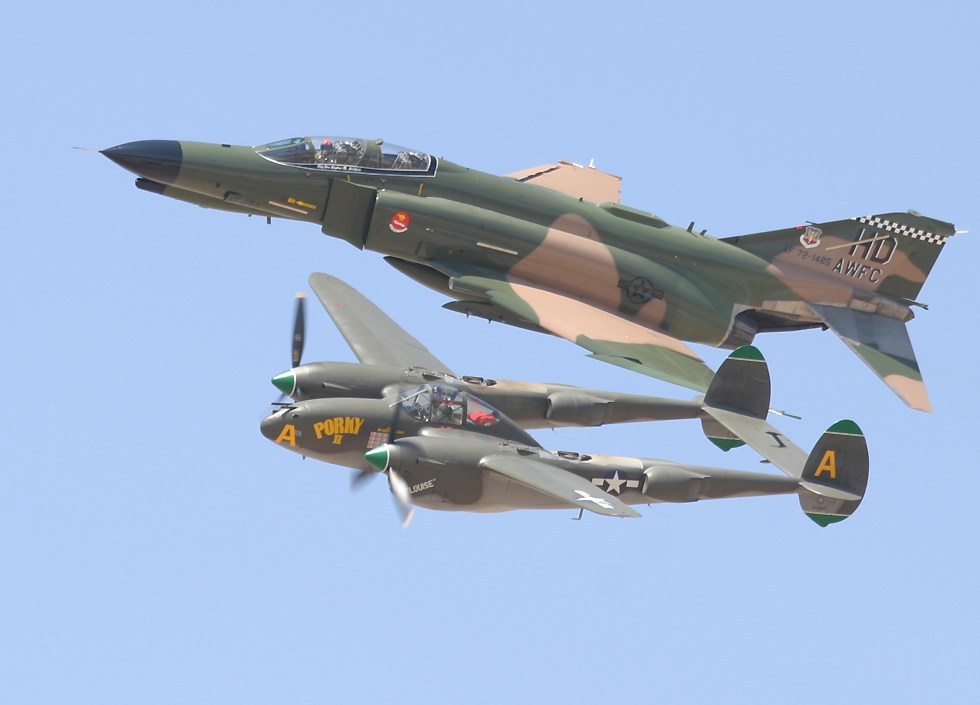
|
